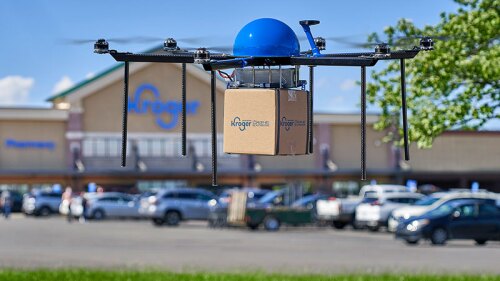New and Disruptive Technology
The implications of climate change are becoming hard to ignore. The frequency of natural disasters has increased significantly in recent years, with the United States experiencing an average cost of $18 billion–plus from climate disasters per year. As these kinds of events have grown more common, calculating climate risk has become a hugely important task for commercial property owners. The topic was the main theme during a panel discussion at the April 2024 Resilience Summit in New York City.
ULI Greenprint has announced that its membership has grown to include more than 70 private companies, demonstrating the real estate industry’s momentum toward and commitment to decarbonization. Through measurement, benchmarking, knowledge sharing, and implementation of best practices, ULI Greenprint members strive to reduce greenhouse gas emissions by 50 percent by 2030 and achieve net zero carbon emissions by 2050 for buildings under operational control.
Integrated System Packages (ISPs), developed by Lawrence Berkeley National Laboratory and sponsored by the U.S. Department of Energy, are packaged efficiency solutions to be incorporated into the real-estate cycle. ISPs reduce transaction costs for building owners and mitigate disruptions to building occupants.
Real-time virtual models of objects, ranging from a building to an entire city, are an emerging concept that has the potential to transform the built environment and the real estate industry in numerous ways, according to the technology’s proponents.
In a world where consumers have grown accustomed to streaming whatever movies they want on demand and having purchases delivered to their doorsteps the next day, commercial real estate needs to focus its efforts in innovation on providing better consumer experiences, panelists said at the “Innovative Trends in Commercial Real Estate” session at the 2021 ULI Fall Meeting in Chicago.
ULI Greenprint Center for Building Performance’s annual report found a 12.4 percent reduction in carbon emissions in 2020 compared with an average 3.5 percent fall in previous years. In addition, the report found that real estate owners took advantage of reduced occupancy during the pandemic to double the implementation of energy efficiency projects.
The real estate industry can simultaneously combat inequality and boost property values by improving broadband access, according to a new ULI report. Broadband and Real Estate: Understanding the Opportunity, from the Institute’s Curtis Infrastructure Initiative, makes clear that high-speed internet is no longer a luxury but a necessity for participating in society and the economy.
Kroger, one of the largest U.S. grocery store chains, has partnered with Drone Express to begin testing grocery delivery via autonomous drones in Centerville, Ohio.
According to the North American Ports Report by Cushman and Wakefield, U.S. ports rebounded strongly in the second half of 2020. Volumes for the full year changed only modestly—a 2 percent increase in loaded inbound twenty-foot equivalent units (TEUs) and a decline of 5.5 percent on loaded export units.
SPONSORED POST:See the latest trends in CRE and learn how slow payments in the construction industry generated domino effects costing an estimated $100 billion in 2020. Rabbet, a provider of cloud-based software for managing construction finances, surveyed real estate developers, lenders, subcontractors, and general contractors and packaged the results in its two latest reports.








